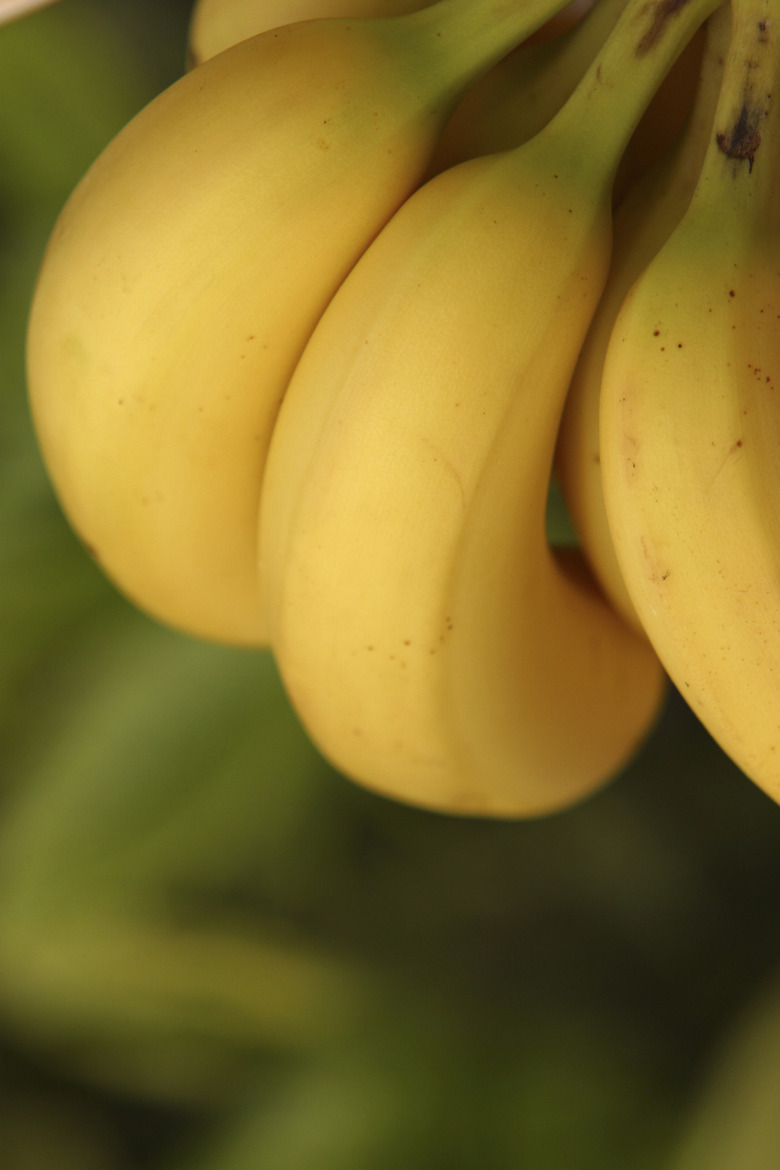Growing Bananas In South Carolina
Bananas (Musa spp.) are undeniably tropical plants. They have a zero-tolerance policy for frost, and they will die back whenever the temperature dips below freezing. Their sensitivity, along with their long fruiting cycle, makes them a challenge to grow in the southeastern U.S., but with the right choice of cultivar and the proper care, you can successfully grow bananas in U.S. Department of Agriculture plant hardiness zone 8, the zone that makes up South Carolina's Lowcountry.
Short-Cycle and Cold-Tolerant Varieties
Step 1
Because most banana varieties require between three and four months from the time the fruit stem first emerges until the fruit reaches maturity, it's nearly impossible to get a crop from them in a climate like South Carolina's. Some varieties, such as "Viente Cohol," are considered short-cycle varieties, and they can produce a crop in a fraction of the time required by standard varieties. The fruit is ready to pick in as little as four weeks after it first emerges. Other varieties, such as "Orinoco," can tolerate colder temperatures, allowing them to have an adequately long season in cooler climates.
- are undeniably tropical plants.
- Because most banana varieties require between three and four months from the time the fruit stem first emerges until the fruit reaches maturity, it's nearly impossible to get a crop from them in a climate like South Carolina's.
Protecting Plants
Step 1
Regardless of the variety, bananas will require protection from the elements if you want them to make it through a South Carolina winter. Banana plants can usually withstand temperatures as low as 28 degrees Fahrenheit for short periods, but anything colder will cause the plant to die back to the ground. Temperatures below 22 F will likely kill the entire plant, including the underground rhizome. To protect your banana plants from the cold, wrap the trunk or cover the entire plant with a blanket. An alternative is to surround the plant with a wire cage, fill the cage with dry leaves, and wrap the whole thing with a tarp.
Pruning
Step 1
The banana's rhizome will produce multiple shoots, called suckers, but only one shoot should be allowed to grow to maturity so the plant can devote all its resources to producing fruit on that sucker. Prune off all other suckers as they emerge. After you harvest the fruit, cut the stem back to about 30 inches above the ground. Cutting the stem all the way to the ground will prompt the plant to send up more suckers, which can weaken the plant.
- Regardless of the variety, bananas will require protection from the elements if you want them to make it through a South Carolina winter.
- The banana's rhizome will produce multiple shoots, called suckers, but only one shoot should be allowed to grow to maturity so the plant can devote all its resources to producing fruit on that sucker.
Pests and Care
Step 1
Bananas need lots of sun and water, and they do best if they are given ample fertilizer. A balanced 8-10-8 fertilizer applied once a month works well. Use 1/2 pound for a small plant, working up to 2 pounds for a mature plant in each monthly application. Spread the fertilizer around the plant and then water it in well. Bananas are not particularly vulnerable to pests that can do significant damage to the plant, especially in temperate climates like South Carolina.
